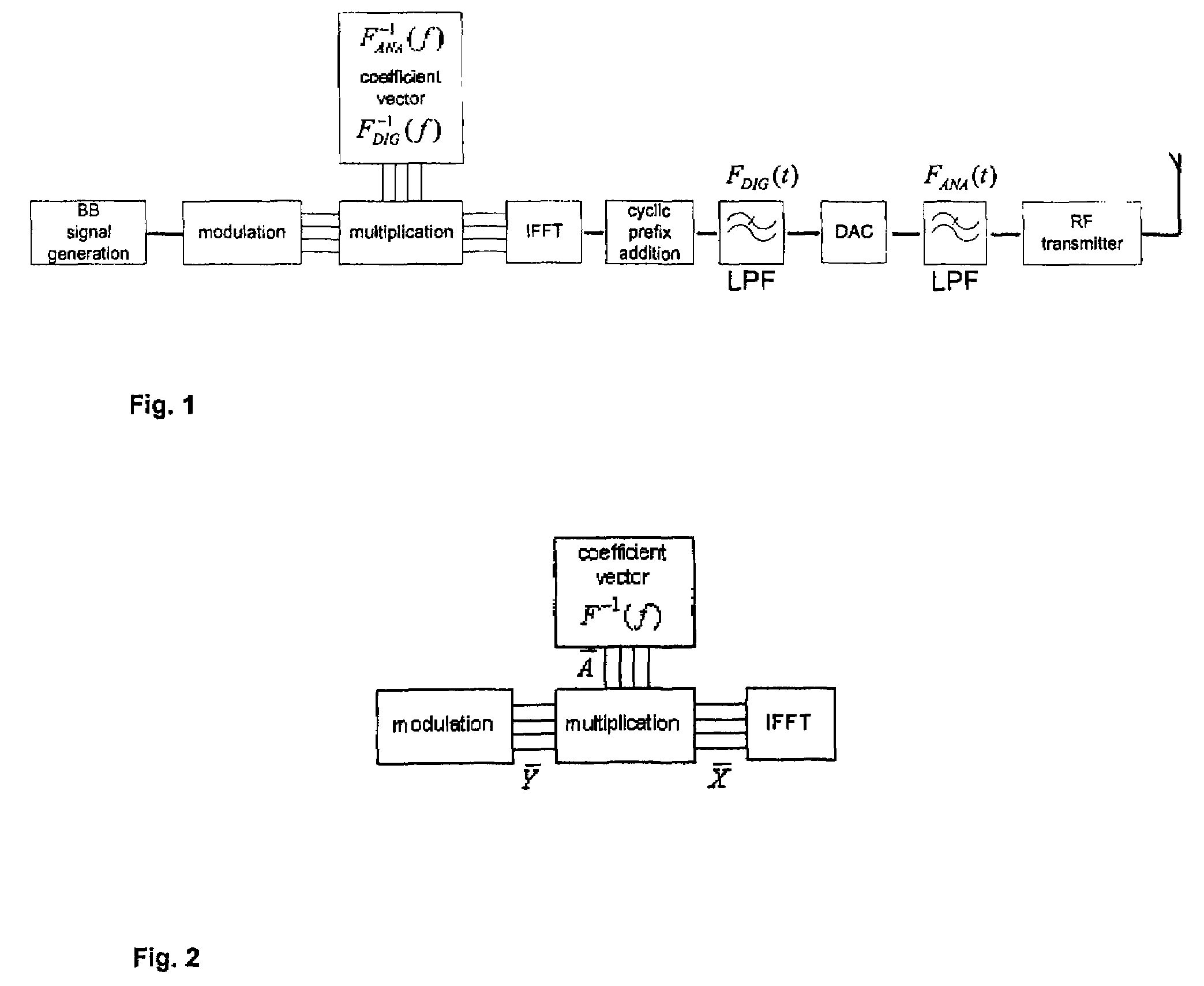Apparatus and method for base band filtering
a filter and base band technology, applied in the direction of amplitude demodulation, line-fault/interference reduction, pulse technique, etc., can solve the problems of low amplitude variation in the pass-band and high stop-band rejection, high circuit complexity, and limited interference between different users operating within the same channel. achieve the effect of reducing circuit complexity and improving performan
- Summary
- Abstract
- Description
- Claims
- Application Information
AI Technical Summary
Benefits of technology
Problems solved by technology
Method used
Image
Examples
Embodiment Construction
FIG. 1 shows a simplified block diagram of a frequency domain enhanced base band filtering according to an embodiment of the present invention. Starting from the base band signal generation and ending at a radio frequency transmitter. After a modulation, the base band signal is provided in frequency domain. In this embodiment, the way of obtaining a simpler filtering, either in digital or analog domain, is to allow significantly greater amplitude variation in the pass band of the filter while maintaining a large enough attenuation in the stop band. In order to maintain the original frequency response of the base band, the frequency domain base band signal after modulation is multiplied by an inverse transfer function of the simplified filtering in frequency domain. In FIG. 1, the inverse transfer function is shown as a coefficient vector F−1ANA(f) (analog domain) and F−1DIG(f) (digital domain). In the following, the filter used for the simplified filtering will be referred to as “en...
PUM
 Login to View More
Login to View More Abstract
Description
Claims
Application Information
 Login to View More
Login to View More - R&D
- Intellectual Property
- Life Sciences
- Materials
- Tech Scout
- Unparalleled Data Quality
- Higher Quality Content
- 60% Fewer Hallucinations
Browse by: Latest US Patents, China's latest patents, Technical Efficacy Thesaurus, Application Domain, Technology Topic, Popular Technical Reports.
© 2025 PatSnap. All rights reserved.Legal|Privacy policy|Modern Slavery Act Transparency Statement|Sitemap|About US| Contact US: help@patsnap.com



